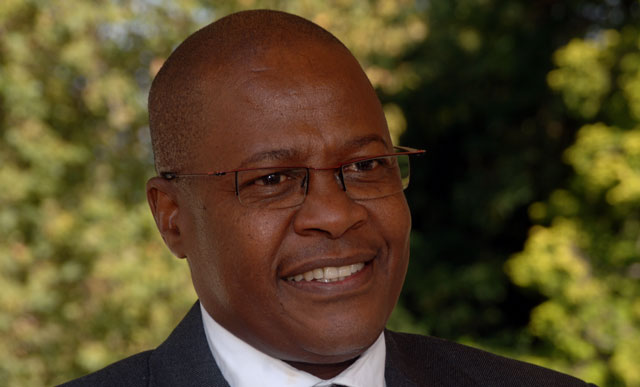
Brian Molefe wants this week to end.
The second official week of winter has not been kind to the acting Eskom CEO, who has had to deal with bomb scares, gunshots, load shedding and unkind weather gods.
“It has been a very interesting week, between the shootings and the bomb threat and losing 1 400MW from Cahora Bassa, having some of the units trip [unit 6 of the Duvha power station lost 300MW] as well as cloud cover over the Northern Cape, which is almost unheard of because it is a semi-desert,” he said on Friday.
Molefe also told the standing committee on appropriations in parliament on Friday that Medupi’s unit 6 is generating 500MW of its 800MW as 300MW is being tested.
“I think we are on the recovery phase, building up our reserves, letting the machines rest a little bit — we’ll do some maintenance over the weekend and then we will go back to our plan again on Monday,” he said.
The plan Molefe speaks about is a new strategy he implemented called maintenance without load shedding, which resulted in the first 10 days of winter experiencing no load shedding.
Molefe said he has learnt much since taking over as acting CEO, and a highlight has been developing a programme of maintenance without load shedding.
“You can manipulate the planned maintenance and unplanned maintenance to bring it within a balance,” he said. “But unfortunately that formula has an error variable … which is the random events that could occur that could disturb your plan and change the equation. It is those error variables … that are difficult to predict that will result in load shedding now and again.
“Part of the strategy will be to reduce the unpredictability of some of the variables.
“These machines are old,” he told the committee. “It’s the size of the random variable that will determine of our fate.”
Asked if the 10 days of load shedding were a 2010 World Cup strategy to “keep the lights on” for the World Economic Forum (WEF) on Africa, Molefe dismissed the notion, saying: “If the WEF was happening last week and we needed to do load shedding, it would have been possible to exclude the WEF from load shedding.”
Molefe compared Eskom’s ageing fleet with Cuba’s second-hand cars and said they need to predict issues before breakdowns occurred.
“The cars in Cuba are very bad at warning you when they break down,” he told the committee. “We have to think like the Cubans and get better at maintaining.
“Eskom needs to put in place a computerised system of preventative maintenance,” he said. “If we can find out about a tube leak before it happens, we can take it off [the grid] before it happens…
“The problem is that these machines are old – they were built without computers. The new ones have better computerised systems and are being built in the age of the internet of things.”
Molefe said tariffs were exceptionally low in 1990s and 2000s and now South Africans saw it as a constitutional right, which he said was false.
Eskom could earn nearly R40bn if a 25,3% tariff increase it has requested is approved, the utility said recently.
The increase requested by Eskom is made up of the 12,7% increase Nersa granted the utility in March this year, plus a 10,1% for the open-cycle gas turbines and the short-term power purchase programme as well as a 2,5% increase in the environmental levy.
The amount would include R7bn Nersa had awarded Eskom after the company spent R10bn buying diesel last year, more than three times the amount it initially budgeted for.
“When things normalise the tariffs should normalise,” he said. “We need to smooth out that wave [of profit and loss] so we don’t have busts and booms.”
Molefe told the committee that the capital expenditure programme Eskom is embarking on is the “ticket out of load shedding”.
“We have to drink medicine so we can get better,” he said, referring to the five-year R280bn capex programme. — Fin24




